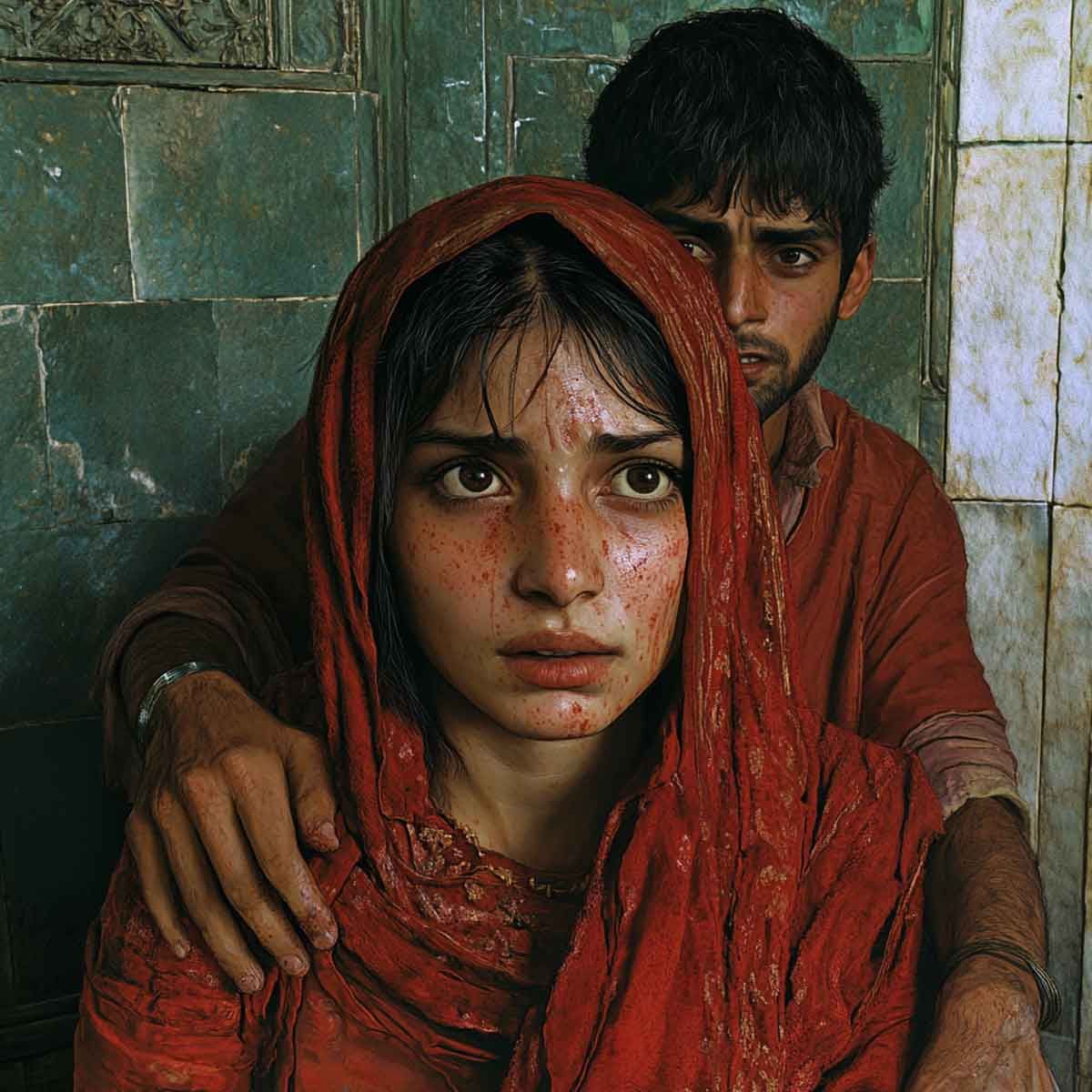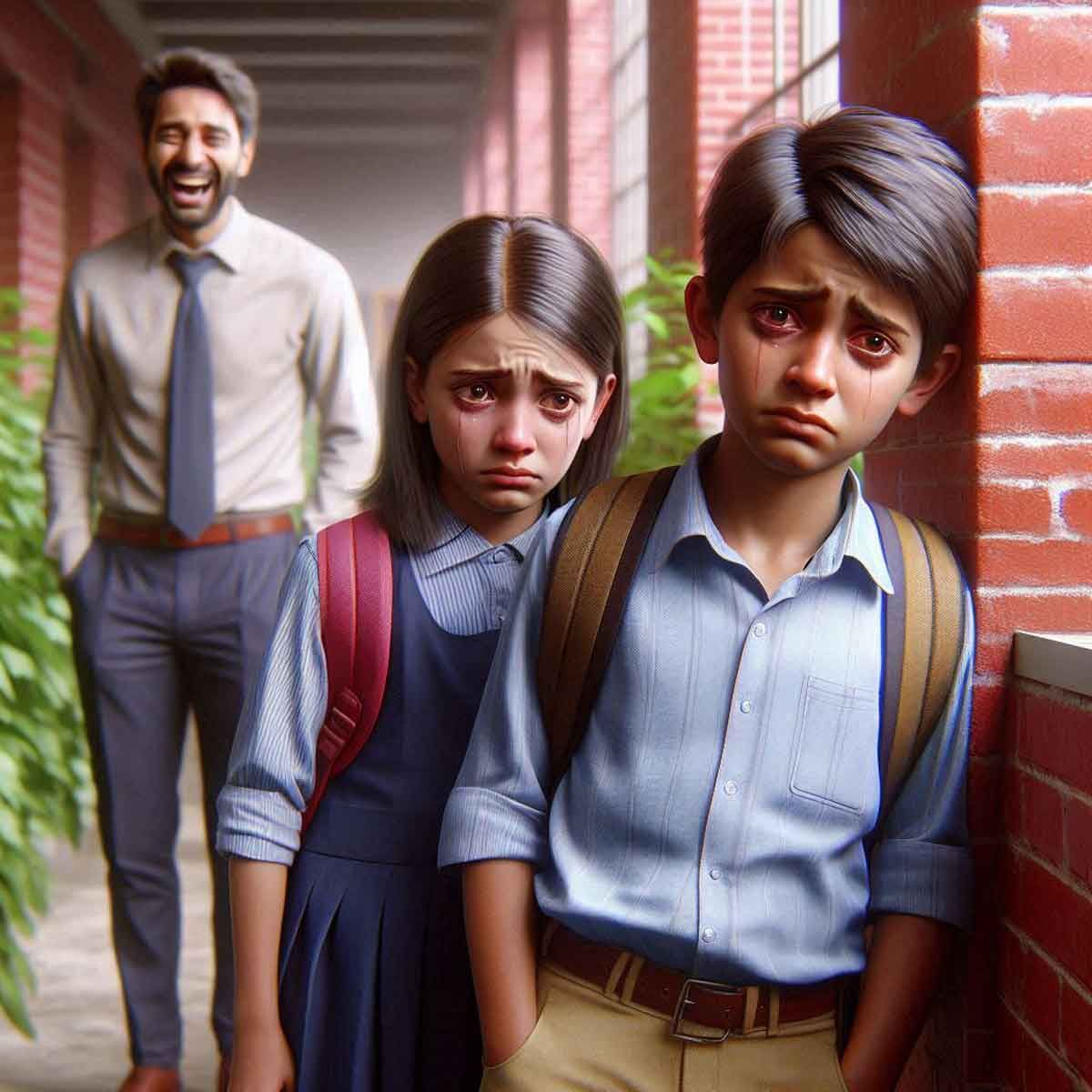More Coverage
Twitter Coverage
Satyaagrah
Written on
Satyaagrah
Written on
Satyaagrah
Written on
Satyaagrah
Written on
Satyaagrah
Written on
JOIN SATYAAGRAH SOCIAL MEDIA
"न्याय, मलाई मार के": In 1992, hundreds of Hindu girls were exploited in the Ajmer gangrape case by 'Khadims' of the Dargah and ex-Congressman Nafis Chisti, with the perpetrators only being convicted by the POCSO court after a long, grueling 32 years

In a significant development, the POCSO court has delivered a historic verdict in the Ajmer 1992 Sex Scandal, finding six individuals guilty. The accused, who have long been under the shadow of this heinous crime, appeared before the court, which will announce the sentences at 2 pm on August 20. One of the accused remains at large, highlighting the ongoing challenges in bringing all involved to justice.
|
|
The court found Nafis Chishti, Naseem alias Tarzan, Salim Chishti, Iqbal Bhati, Sohail Ghani, and Syed Jameen Hussain guilty of the crimes committed in 1992. These individuals were involved in the gang rape of over 100 girl students from Ajmer’s renowned Mayo College and subsequently blackmailed them with compromising photographs. Four other accused have already served their sentences, a fact that underscores the prolonged and complex nature of this case. Following the guilty verdict, the police immediately took all the present accused into custody, ensuring they would face the full extent of the law.
The case has a long and troubling history. Four convicts in the case have already served their sentences. The investigation began with the filing of an initial chargesheet on November 30, 1992, which listed eight individuals. As the investigation progressed, four additional chargesheets were filed, bringing the total number of accused to 12. This extensive legal process reflects the scale and severity of the crimes committed.
The primary figures in this scandal held positions of significant influence within political circles. Farooq Chishti, who was the President of the Ajmer Youth Congress, and Nafis Chishti, the Vice President of the Ajmer Indian National Congress, were among the accused. Anwar Chishti, who served as the Joint Secretary of the Ajmer Indian National Congress, was also implicated. These connections to political power not only amplified the scandal’s impact but also highlighted the misuse of authority.
The scandal first came to public attention through an article in a local newspaper, which exposed the sexual exploitation of schoolgirls who were blackmailed with nude photographs. The gang responsible had deep-rooted influences across religious, political, social, and economic fields. The revelation of such widespread abuse created a national outcry, sparking fear and concern among government officials, police, and members of social and religious organizations across the state.
|
Ajmer Police Found Young Men from Influential Families of Khadims and Caretakers of Sufi Moinuddin Hasan Chisti’s Dargah Involved in the Scandal
The investigation into the 1992 Ajmer scandal took a dark turn when the Ajmer District Police discovered that several affluent young men from the families of Khadims, who are the caretakers of the Sufi saint Khwaja Moinuddin Hasan Chishti’s dargah, were deeply involved in the heinous crimes. The scandal, already shocking due to its nature, became even more alarming when the police also began to suspect the involvement of high-ranking politicians and officials. This revelation suggested that the scandal had deep roots in influential circles, making it a complex and sensitive issue.
The police faced immense challenges from the outset. Due to concerns about potential threats to peace and order in the city, there was significant hesitation to take immediate action against the powerful suspects. The fear of disturbing the social harmony of Ajmer put the police under considerable pressure, creating a situation where justice seemed difficult to attain.
The scandal gained further notoriety when a subsequent news article titled “How the Blackmailers of Schoolgirls Remained Free” was published, featuring explicit photos that left the public outraged. These photos, a stark reminder of the gravity of the crimes, ignited protests across the region. Hindu organisations, angered by the apparent lack of swift justice, even threatened to take matters into their own hands if legal action was not taken against those responsible. The situation became increasingly volatile as public demands for justice grew louder.
Under this immense public and social pressure, the Ajmer District Bar Association took a proactive step by meeting with local authorities. They suggested that the identified suspects should be jailed under the National Security Act as a measure to calm public anger and prevent any potential communal tensions. This suggestion highlighted the seriousness of the situation and the desperate need for swift and decisive action to maintain order in the city.
Realizing the complexity and sensitivity of the case, the investigation was eventually handed over to the CID CB (Criminal Investigation Department Crime Branch), marking a significant step in the pursuit of justice. This transfer of the case to a specialized investigative body was seen as essential to ensure a thorough and impartial investigation, free from the local pressures that had initially hindered progress.
The incident did not remain confined to Ajmer alone; it sparked a widespread movement across Rajasthan, with people demanding the arrest of all those involved and justice for the victims.
|
|
On May 30, 1992, the CID CB officially took over the investigation into a grave scandal that had shocked the community. This case involved influential individuals, including members of the Khadim Chishti families and the Youth Congress, who exploited schoolgirls, highlighting deep-seated issues within some segments of political and religious institutions. The public's awareness of the scandal escalated significantly when explicit photos that had leaked from a local photo lab drew broad attention to the heinous activities.
The investigation, initially under the purview of the Ajmer District Police, was marked by several complex dynamics and was later directed by senior IPS officer N.K. Patni. The case's sensitive nature and the high-profile identities of those involved added layers of complexity and necessitated a shift to higher authorities for a more focused investigation.
The scandal had far-reaching consequences beyond the legal battles and public outcry. It led to tragic outcomes, where the harassment associated with this case prompted several people, including the photo lab owner and manager, to commit suicide. This aspect of the scandal not only illustrated the immense pressure exerted on individuals connected to the case but also the profound impact of public and private scrutiny. Moreover, the despair was so overwhelming that several of the girls who were victimized felt compelled to end their lives, adding a somber note to the already dark narrative.
The transition of the investigation to CID CB was seen as a pivotal move to address the intricate and influential ties that complicated the proceedings.
Despite decades of demands for justice by over 100 victims, the path to justice has been fraught with obstacles and setbacks. Many of the accused were acquitted or released on bail, causing deep frustration and disillusionment among the victims and their families. The legal journey of this case spanned across various judicial arenas, including the High Court, Supreme Court, Fast Track Court, and POCSO Court. Yet, the complexity of the legal proceedings and the passage of time have not brought solace or closure to the victims. Most of them, now in their 50s or 60s, continue to grapple with the aftermath of the crimes, feeling that justice has indeed remained elusive.
Amidst the ongoing legal battles, the film “Ajmer 92,” released in July 2023, revisited the harrowing events of the past by depicting the true events of the rape, blackmail, and entrapment of 250 girls. Directed by Pushpendra Singh, and starring Karan Verma and Sumit Singh in the lead roles, the film aimed to shed light on the dark chapters of the scandal and reignite discussions on the need for justice and reform. However, the film itself became a point of contention.
The release of “Ajmer 92” was met with significant opposition from Muslim organizations, with the Khadim community accusing it of defamation. These accusations pointed towards the sensitive nature of the film’s content, which touched upon the involvement of religious caretakers in the scandal, a portrayal that many found controversial or misleading. The backlash had wider implications, affecting not just the film’s reception but also influencing public discourse during the Rajasthan Assembly elections.
 |
 Support Us
Support Us
Satyagraha was born from the heart of our land, with an undying aim to unveil the true essence of Bharat. It seeks to illuminate the hidden tales of our valiant freedom fighters and the rich chronicles that haven't yet sung their complete melody in the mainstream.
While platforms like NDTV and 'The Wire' effortlessly garner funds under the banner of safeguarding democracy, we at Satyagraha walk a different path. Our strength and resonance come from you. In this journey to weave a stronger Bharat, every little contribution amplifies our voice. Let's come together, contribute as you can, and champion the true spirit of our nation.
 |  |  |
| ICICI Bank of Satyaagrah | Razorpay Bank of Satyaagrah | PayPal Bank of Satyaagrah - For International Payments |
If all above doesn't work, then try the LINK below:
Please share the article on other platforms
DISCLAIMER: The author is solely responsible for the views expressed in this article. The author carries the responsibility for citing and/or licensing of images utilized within the text. The website also frequently uses non-commercial images for representational purposes only in line with the article. We are not responsible for the authenticity of such images. If some images have a copyright issue, we request the person/entity to contact us at This email address is being protected from spambots. You need JavaScript enabled to view it. and we will take the necessary actions to resolve the issue.
Related Articles
- Madhya Pradesh HC accepted petition for stay on Muslims performing Namaz in the compound of Bhojshala monument: Read how an educational centre and a historic temple of Goddess Saraswati became Kamal Maulana mosque
- Twitter rewards an Islamist org, set to be banned by India, with a verified blue tick: Here is what PFI has done in the past
- Why Hindus not claiming their temples back from the Government control: Is pro-Hindu govt will always be in power
- In a major development, Mathura court allowed a plea to remove the disputed structure of the Shahi Idgah Mosque near Krishna Janmabhoomi for hearing: suit filed in the name of "Bhagwan Sri Krishna Virajman"
- "अल्हम्दुलिल्लाह!!! Mob has no religion": The Rajasthan High Court grants bail to 18 Islamists accused in the Hindu Shobha Yatra attack in Chittorgarh, highlighting the challenges of pinpointing culprits amidst the chaos of mob-induced communal violence
- "Waqf Act is against secularism, unity, and integrity of the nation; Waqf is not mentioned anywhere in the Constitution" says Ashwini Upadhyay: Filed PIL in Delhi HC challenging provisions of Waqf Act
- No evidence to tie Dinesh Yadav to violence, intention assumed based on him being Hindu: Anti-Hindu riots by Muslim community that shook the capital city of India and analysis of the conviction
- Plea of MP Navneet Rana and husband MLA Ravi Rana to quash FIR for the gruesome and heinous crime of reciting Hanuman Chalisa outside Matoshree dismissed by Bombay HC: Justices stated that it was devoid of merit
- SC bench of Justices Chandrachud and AS Bopanna rules in favor of Muslim petitioner: “Don’t exclude non-Hindus from auction process for shop leases in temple”
- Hindu side filed reply in Supreme Court: 'Gyanvapi property belonged to Lord Adi Vishweshwar since time immemorial, even before the Islamic rule in India, and hence cannot be handed to anybody'
- "As per Article 195 from the book ‘Principles of Mohammedan Law’ by Sir Dinshah Fardunji Mulla, Muslim girl above 16 is competent to marry any person of choice": Punjab and Haryana HC cites Sharia to justify child marriage
- Chennakeshava temple in Belur kicks off 'Rathotsava festival' with Quran recitation: Earlier temple administration requested Muslims to vacate their shops, however, Govt gives their nod for non-Hindus to set up stalls throughout festival
- Shivling discovered in the Gyanvapi complex during a survey after the water was pumped out of a well that Muslims were using as 'Wuzukhana' for washing their hands and feet before offering Namaz
- Plea rejected by Allahabad High Court to open 22 'closed rooms' of Taj Mahal to research the real history, says "matter should be left to historians. Please don't take us to the historical facts which you believe"
- 'Every sinner has a future': Bombay HC suspends Nijam Asgar Hashmi's life sentence, convicted for beheading Umesh Ingale, his girlfriend’s cousin; questions evidence led by Hashmi, who invited Ingale for "sheer khurma" on Eid just to get rid of him




























